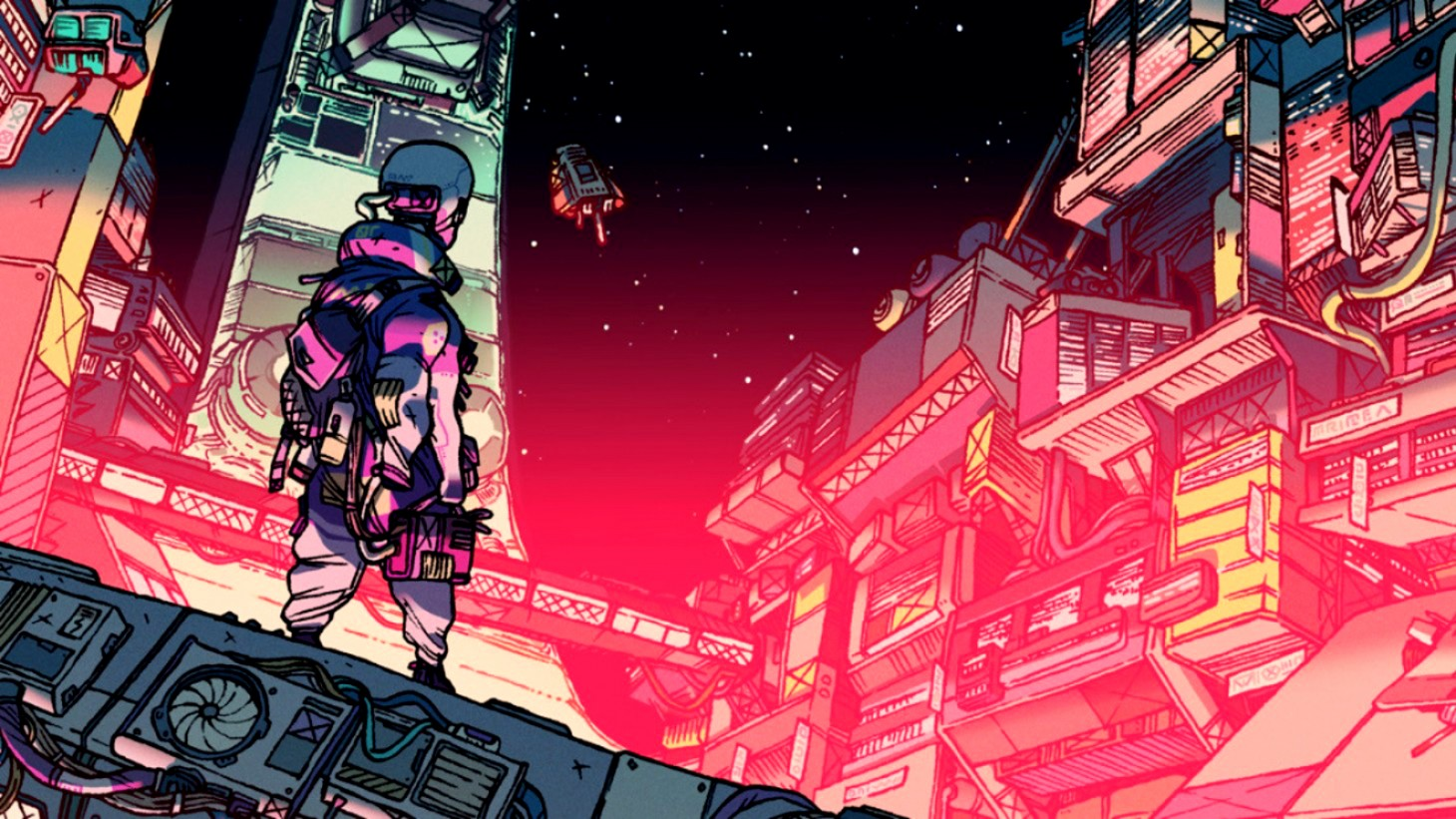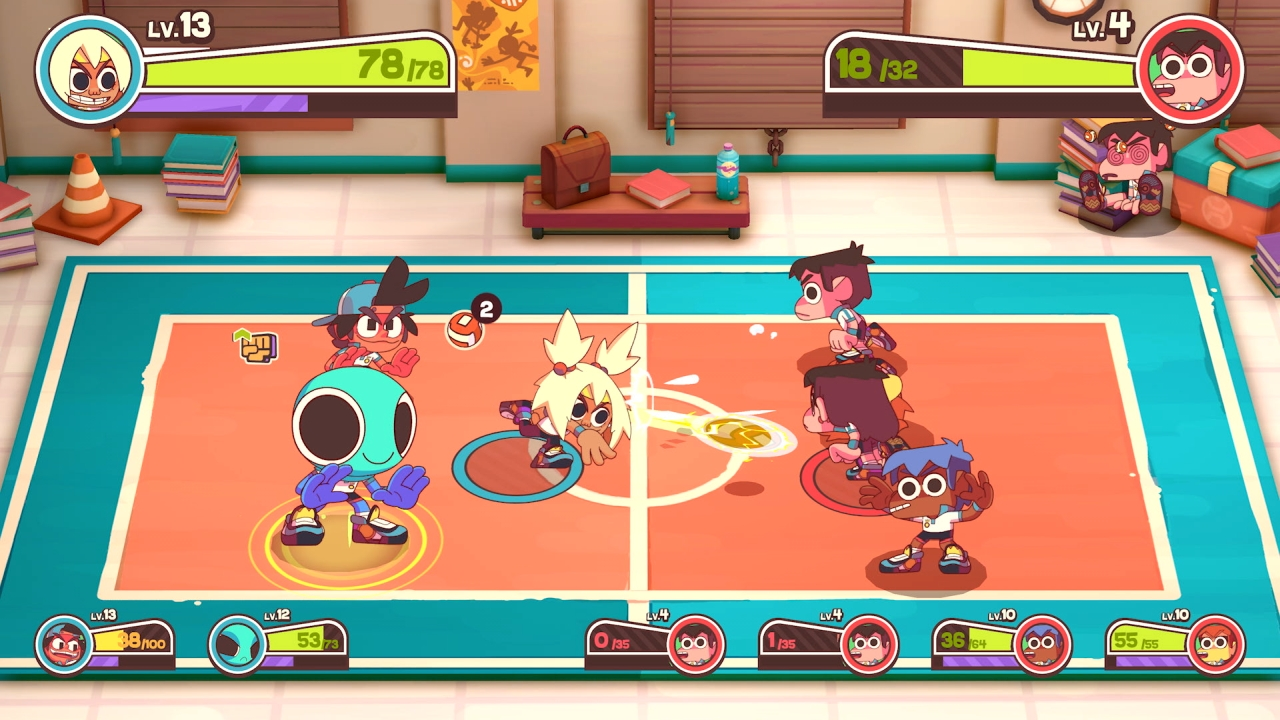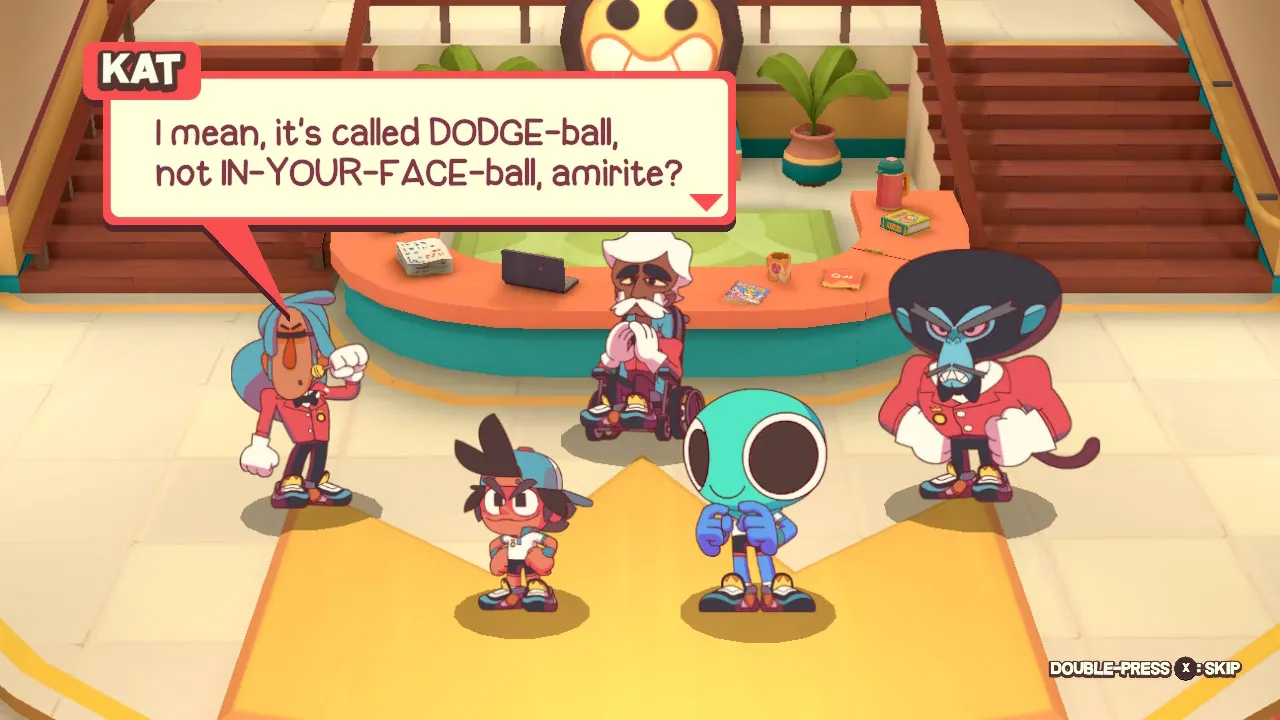Two Good Hours With PC Game Pass, 2nd Edition
Spending time with Citizen Sleeper, Dodgeball Academia, and My Friend Pedro

We're back for another edition of Two Good Hours, where I detail my impressions of three games plucked from the ranks of Microsoft's PC Game Pass services. As I detailed in the first edition, I’m a lifelong PlayStation gamer that finally checked out Game Pass for PC.
Game Pass is the perfect service for a gamer who wants to try out so many games but doesn’t have the budget to buy each one. I decided the best way to maximize the number of games I get to try is to spend just two hours with each one before moving on to the next. If a game hasn’t grabbed my attention during that time, I feel safe in saying it isn’t for me.
For the first edition, I tried Death’s Door, which I loved and will definitely go back to finish; Carrion, which was great other than the people (non-monster) missions, so I may go back to finish it; and Trek to Yomi which I found to be a disappointing game that had style but just made me wish I was playing Ghost of Tsushima.
Now, for the second edition, I’ve spent two hours with Citizen Sleeper, a sci-fi tabletop-like narrative adventure; Dodgeball Academia, a cute animated RPG set at a high school for dodgeball prodigies where the combat is handled by, you guessed it, dodgeball matches; and My Friend Pedro, the uber-stylish 2D indie shooter with blood and body parts in full supply.
So enough yapping, let's get to the games!

Citizen Sleeper
It is perhaps inevitable that Citizen Sleeper will draw comparisons to another dialogue-heavy mystery narrative game, Disco Elysium. Having spent a comparable amount of time with each game, I can say this sci-fi story is definitely equal to the more celebrated detective drama.
Citizen Sleeper puts you in the shoes of a “sleeper”, a robot implanted with a consciousness that belongs to a mega-corporation. Well, you decided you didn’t want to be anyone’s property and took off for a far-away, supposedly off the grid space station. Waking up in a storage container, you acclimate to your surroundings and meet the denizens of the station, some friendly and some less so, and thus, your new life begins.
The writing is uniformly excellent, and many of the characters inspire at least a bit of empathy, placing the story above the altogether depressing and unlikeable cast that inhabits Disco Elysium. Each conversation has various branching dialogue paths that offer a significant amount of replayability for those who wish to pursue it. With only two hours in, I’m not able to determine how much your choices truly affect the story, but at the very least, completionists should be treated to some varying bits of dialogue.

Developers lifted gameplay directly from its tabletop-RPG roots, with the main mechanic literally involving diced placed on an activity square, with the outcome determined by the die’s corresponding probability for positive, neutral, and negative results. The activities I encountered in my two hours ranged from getting medicine to cure a robot-specific ailment to chatting up the food purveyor in the station’s market. You’re basically trying to find out what’s going on, make some money, and doing various jobs for the other folks on the station whom you choose to associate with.
The space station is large enough to have multiple activities available on every turn, and with only 4 dice per turn, choosing which activities to pursue is a huge part of the strategy. There’s also a hacking component unlocked by talking with a specific gent you meet along the way, with various nodes on the network needing a specific die-value to be unlocked for hacking. The gameplay is engaging and doesn’t hold your hand or try to force you down a particular path.
After spending the usual two hours with the game, I have a pretty good grasp of what the experience will be like, if not how the various events will unfold. The plot is ever-twisting, with new characters being introduced to keep things interesting and fresh. The quality of the writing is the primary draw here and is more than enough to make me want to come back later on to see what happens next. It feels a bit like a choose-your-own-adventure book with a sci-fi setting, and that simply can’t be a bad thing.

Dodgeball Academia
Cartoon-styled RPGs aren’t typically in my wheelhouse, but after hearing Colin Moriarty rave about the game on his Sacred Symbols podcast, it was definitely on my radar. Seeing it on PC Game Pass made this one a straightforward choice for investing two hours of my gaming life.
The story has you in the sneakers of Otto, who is coming to the titular school for the first time, hoping to unlock his special skills at the game of dodgeball. He meets lots of NPCs, forms his own team to compete in the school tournament, makes some rivalries, and even goes to class from time to time.
The game has an undeniable visual charm, something akin to what used to be Saturday morning cartoons, all gorgeously animated. There's no voiceover here, just text to be read, which can get a bit wearisome after a while, especially with the screen-shaking effect used to punctuate an emotional bit of dialogue here and there.
The music is enjoyable and changes dynamically based on who is on screen and what is happening at any given time. This is a welcome feature as the music is always on and could quickly get old without the melodies shifting around with the action.

Speaking of action, this is an RPG and besides dialogue, the key feature of such games is combat. As you may have guessed from the game’s title, combat takes the form of short dodgeball matches, either one-on-one or with your team. The matches I fought in were fairly simple, with a throw, catch, and eventually a power shot mechanic. I didn’t see it, but I’m told further mechanics that add to the complexity of the matches are introduced later.
Winning encounters net you XP and money for leveling up and buying items in the campus store, respectively. You can also get loot drops as wearable gear that can enhance your stats in combat. Early in the game, you have a party of two other NPCs that make up your dodgeball team, and it stands to reason that number could grow later in the game.
The dodgeball matches are simple affairs and I can see them growing tiresome rather quickly. Not that they are easy, but the challenge, at least early on, is derived from going against teams with much larger caches of HP than yourself. So the challenge is in avoiding getting hit and hoping to master the catch mechanic’s seemingly unreliable timing.
The cast of characters is endearing and the overall aesthetic is enjoyable, with animations that make it fun just to watch the proceedings. However, with limited complexity to the action, I can’t see myself going through a ton of random encounters just to stick around for the story. There’s nothing wrong with the game, and many will enjoy it, but the conventions of the genre aren’t enough to hold my attention here.

My Friend Pedro
Make a list of the best indie action games in the last few years and My Friend Pedro is likely to be on it. This is a slick, stylish bit of mayhem that just feels great to play as long as you don't mind the unhinged humor and buckets of blood and body parts you'll create along the way.
If you were to take Hotline Miami and make it a side-scroller with a jump button, it would look a lot like this. This is like a 1990s John Woo film where you get to direct the action, jumping and flipping in slow motion while shooting in all directions.
The action is non-stop, with bullets flying everywhere, playing out like a combination of a physics puzzler and adrenaline management simulation. Many times I forgot to dodge or even reload when the action was heavy, leaving me ducking for bits of often-destructible cover while I assessed my next move.
I got about halfway through the game, encountering two of the game’s bosses across various stages. Early on, most of the enemies are right ahead of you and the challenge lies in firing quickly enough. Soon, you’ll be given additional weapons and even modes of transportation across the screen, all with an eye on increasing your lethality.

The best bits come when you're offered a way to kill in creative ways and employ those physics-based elements to accomplish kills that go beyond your guns. Even the modest frying pan can play a part in your death-dealing... just trust me on that one.
The action is simple, as you of course fire your gun(s) with the triggers while pressing one button slows the game down to a Max Payne-like bullet-time pace, where you can jump and flip to more easily put your guns on the baddies. Another button has you twirling like a ballerina to dodge the swarm of bullets constantly aiming to take you down. There’s an old-school arcade game ethos here as your combos and kills rack up points along with being graded on your skill at the end of each level, giving a ton of impetus to replay for better scores.
The game isn't just satisfied with running left to right though, as you'll be wall jumping and riding lines and elevators to get to various parts of the level. There's even a brilliant level where you dive off the top of a building in pursuit of a boss, falling head-first at terrifying speed while you practice your deadly ballet at the enemies falling along with you. It's a brilliant bit of subversion after multiple levels (mostly) on your two feet.
The blood is plentiful, and the humor is unique (Pedro is a talking banana after all) but it is a ripping good time that has genuine surprises and moments you’ll be telling your friends about at the water cooler. I’ll definitely be returning to see what other tricks are up Pedro’s sleeves...err... peel.
So that's all for the second edition of "Two Good Hours...", where we looked at three games that couldn't possibly be less alike. Stay tuned for the third edition when I'll be discussing Tunic, Kentucky Route Zero, and Spiritfarer. See you there!
